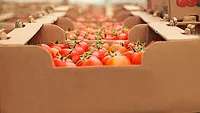Researchers Exploring Microbial Hazards, Sanitation Practices in CEA Facilities

Image credit: Thomas Mengwasser via Pexels
Although the controlled environment agriculture (CEA) sector is growing, little research has been done to explore microbial hazards or best sanitation practices. Funded by the Center for Produce Safety (CPS), Ana Allende, Ph.D. from the Center for Applied Soil Science and Biology, Segura of the Spanish National Research Council (CEBAS-CSIC) is leading a project to analyze microbial risk factors and sampling points to provide data industry can use to develop control measures.
Although Dr. Allende’s team—which includes co-principal investigators Mabel Gil, Ph.D., and Pilar Truchado, Ph.D. from CEBAS-CSIC—is conducting research in Spain, the resulting data and recommendations should be applicable across Europe and the U.S. Additionally, the work focuses on leafy greens but the information could be relevant to CEA crops like peppers, tomatoes, and cucumbers.
The researchers plan to sample three CEA facilities—which grow different leafy green crops using different production systems—during the spring, fall, and winter growing seasons to determine whether certain production practices and seasonality affect pathogen levels. The three facilities grow their crops hydroponically in a water-based nutrient solution, in an artificial substrate, and in soil, respectively.
Dr. Gil explained that, because many growing and harvesting practices are automated, CEA is more closely related to produce processing facilities than open-field production. Unlike processing plants that typically sanitize equipment daily and conduct deep cleaning weekly, CEA facility-wide sanitation in Spain is only performed during a weeks-long shutdown period that occurs in the summer due to hot temperatures. Water quality is tested regularly, however.
At present, the researchers have completed two rounds of sampling and have only found a few Salmonella and Listeria monocytogenes-positive samples. The presence of pathogens is lower than the researchers expected, and they plan to conduct a third sampling round in winter.
The researchers also intend to use the CEBAS-CSIC’s pilot greenhouse to map out traffic patterns from the indoor production facility to leafy greens, doing so by inoculating workers’ boots and trolley wheels with DNA-barcoded, non-infectious surrogate organisms. After a regular work day, the researchers will sample various surfaces and correlate surrogate organism recovery from the crop to potential contamination routes. Additionally, the researchers will assess the efficacy of sanitation strategies implemented in the participating CEA facilities against Salmonella and L. monocytogenes, considering different contamination scenarios such as transient or persistent pathogens.
Looking for quick answers on food safety topics?
Try Ask FSM, our new smart AI search tool.
Ask FSM →









